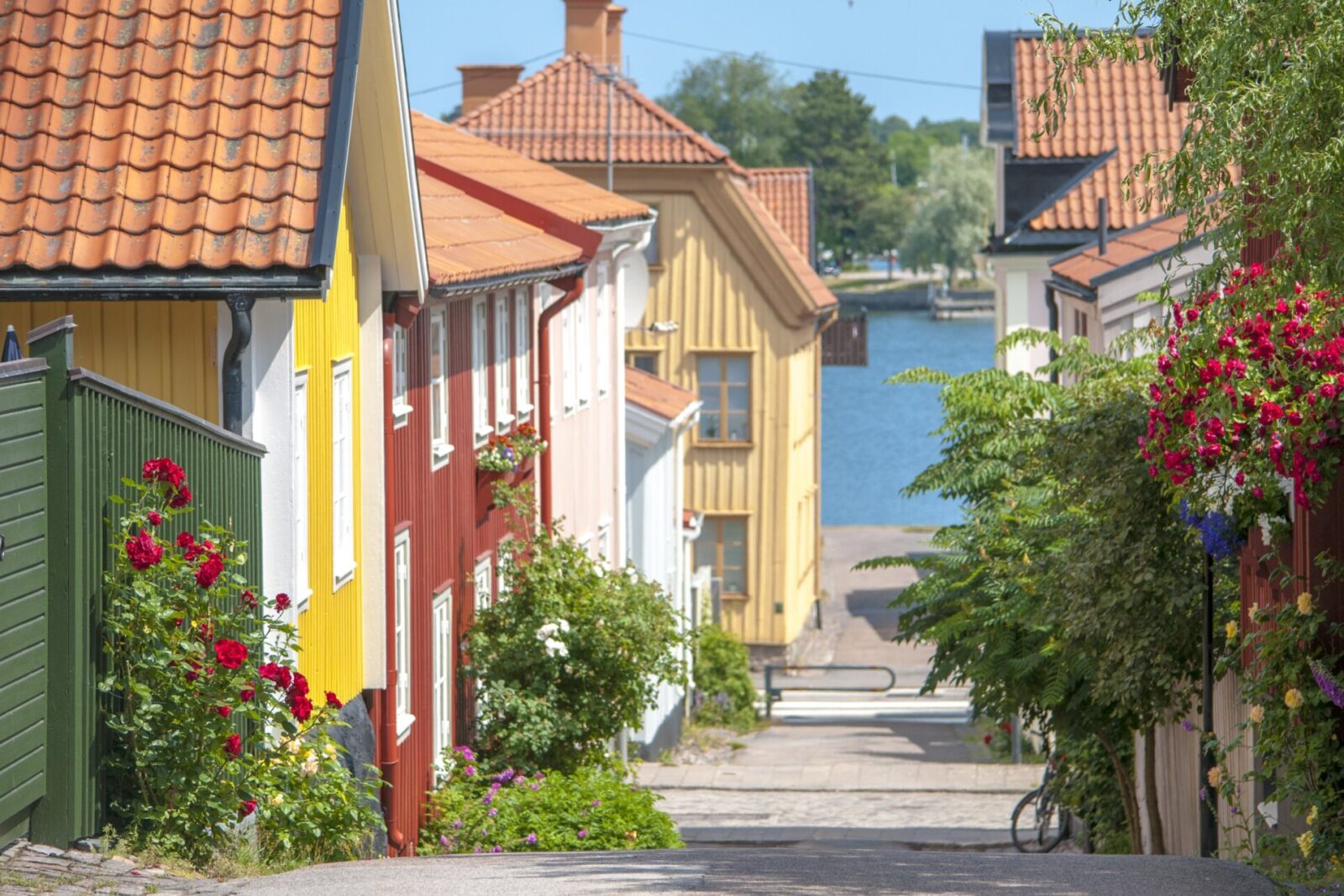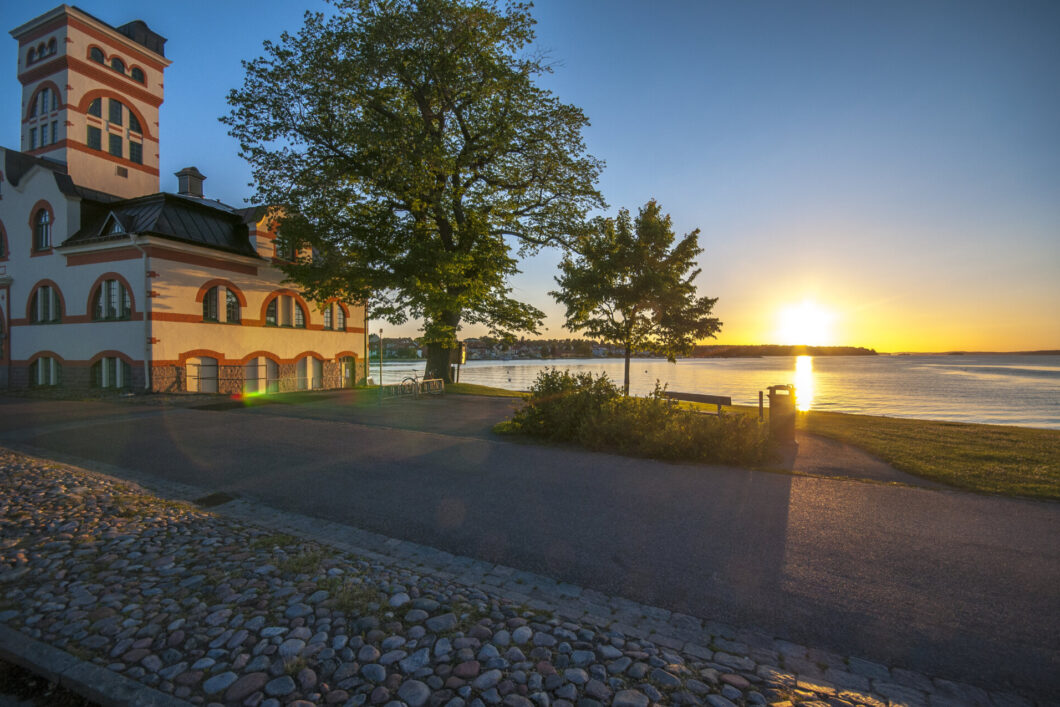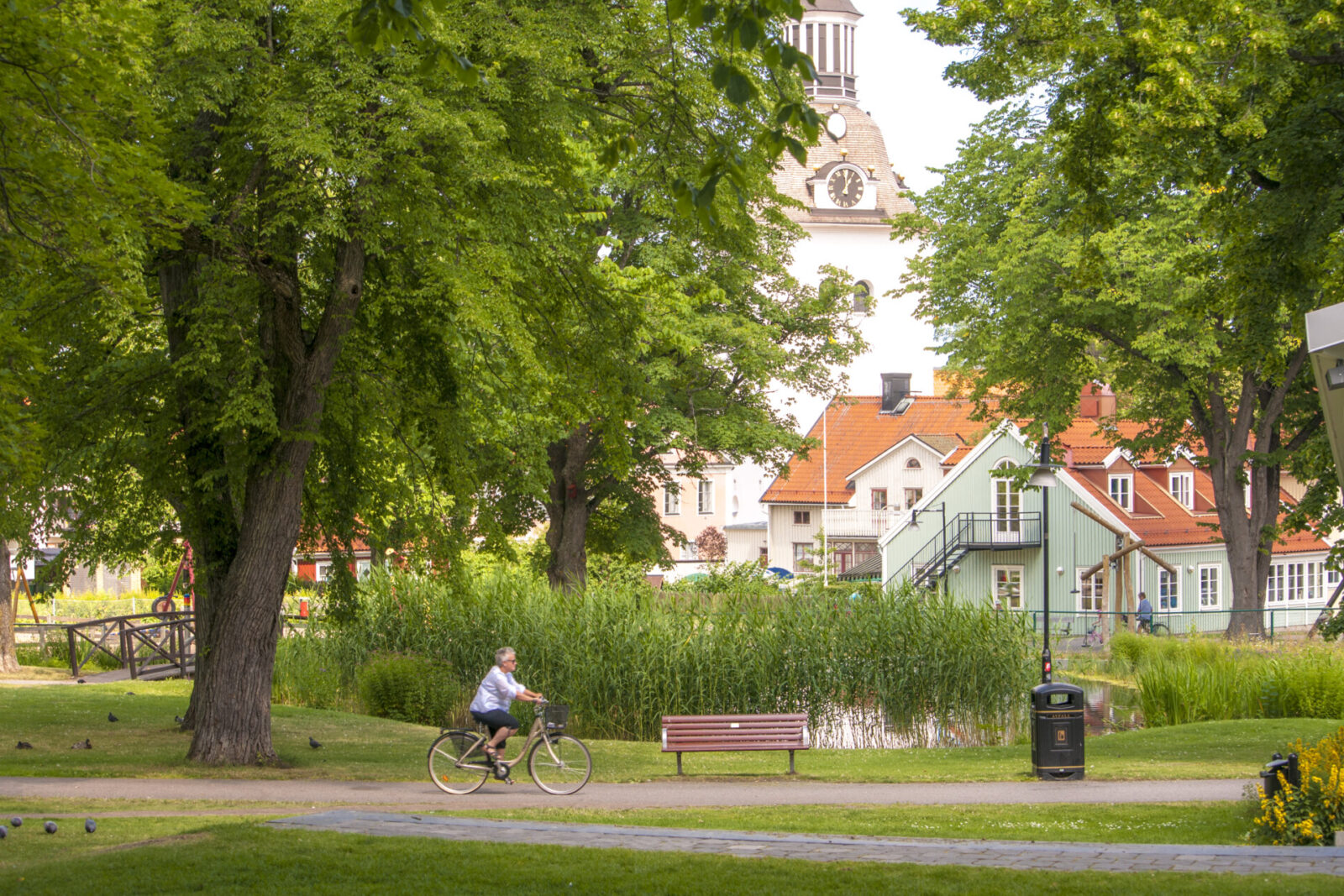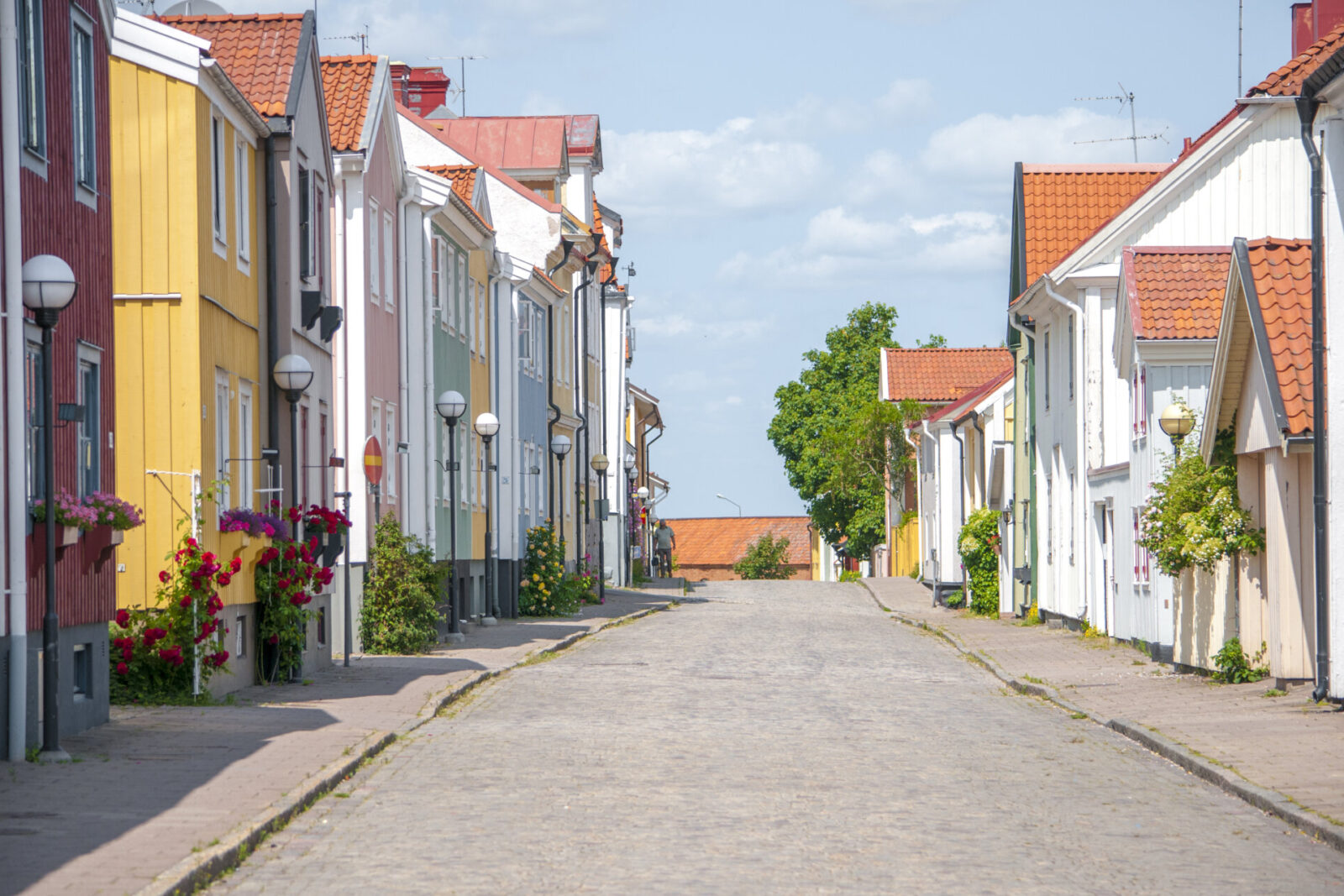
Information Västervik
Västervik Municipality is named after the city of Västervik (which is also the capital of the municipality) and situated in the Tjust archipelago on the southeast coast of Sweden.
It is located in the Småland scenery and the region Kalmar län and known as ‘the pearl of the east coast’.
The municipality is covering a total of 2.035 square kilometres of which 153 km2 consists of water. With ‘only’ 36.025 inhabitants of which the majority live in the city Västervik itself, that is 21.135 people. During summer, when all holiday houses and campsites are occupied, the population temporarily increases.

Bustling summer town
Despite the large number of tourists in Västervik during summer, it is still easy to escape the crowds due to the large amount of space on land and on the water. The city itself is always bustling. It has a lively harbour, cafes with sunny terraces, shops and restaurants. From the week before midsummer to mid-August every week festivities are organized in the city. The most famous are the MC-days, which attracts motorcyclists from across Europa, and the Visfestival-week, a music festival. Many Swedish people schedule their holiday in this period.

History of Västervik (city)
Västervik was originally located at the current location of Gamleby. The town Västervik was first mentioned in 1275. In the year 1433, the King of Sweden instructed to move the city to its present location close to the castle of Stegeholm.
The Danes perform a devastating attack on the town in 1517. In 1548 King Gustav Vasa established a shipyard in the city and introduced lower taxes, these measures allow the city to thrive. Despite new Danish destructions in 1612 en 1677, Västervik continues to grow thanks to the increasing exports of iron and sawn timber (in the mills of Tjust, of which there are still two in Loftahammar).
More and more industry develops in Västervik, such as shipyards, fishing, mills/sawmills, match factories etc., partly due to the construction of the railway (the narrow-gauge railway which was built is still used for tourist purposes). Besides industry a special Herrgård culture (farmhouse/castle) is created throughout the centuries in the Tjust archipelago.



Sights

In the city
The Båtsmansstugorna cottages (low houses from the 1740s and later), situated in the middle of the city, where the military sailors and their families lived.
One of the most symbolic buildings of the city is the tourist information office at Strömsholmen. Once crowned as the most beautiful tourist office (the building is now renovated and the tourist office is temporarily moved to the old town hall). The building was built in 1910 as a bathhouse. Each year around 50.000 tourists come here for information and accommodation, events and information about the archipelago.
The tourist office is adjacent to the Slottsholmen, this is an island with the ruins of Stegeholms castle on it. The island adjoins the Västerik Museum, located just on the mainland to the north of the city. The annual Västervik Song Festival (Visfestival-week) is held on the ruins of the castle.
The oldest church in the city is St. Gertrud church, built in 1400.The church was looted and burned by the Danes in the 1600s, but was rebuilt and finished in 1672. The church has an organ form 1743.

Outside of the city
The narrow gauge railway runs from Västervik to Hultsfred. This is a 70-kilometer long railway line declared heritage. Take the train for a relaxed ride through the beautiful landscape of Småland, along lakes and forests.
Gränsö is a peninsula just a few kilometres form Västervik. It is a nature reserve and today’s most popular hiking region of the residents of Västervik. There is a 12 km long trail on the peninsula. And it has also bike trails and roads. The Gränsö canal bisects the peninsula. It is a popular place to sit down for a picnic and see the boats slowly glide by.
On a short distance of the Gränsö canal, the Gränsö castle is situated. A castle in its traditional environment since 2004, owned by a private person. The castle was burned twice, but the base dates from 1700. The castle houses a café and some shops.
An industrial museum in Ankarsrum and Överum and a brickworks museum in Almvik, are located outside the city of Västervik.
Through the municipality runs the Tjustleden, a hiking trail in nine stages.


